| 1 | Mexican jumping viper |
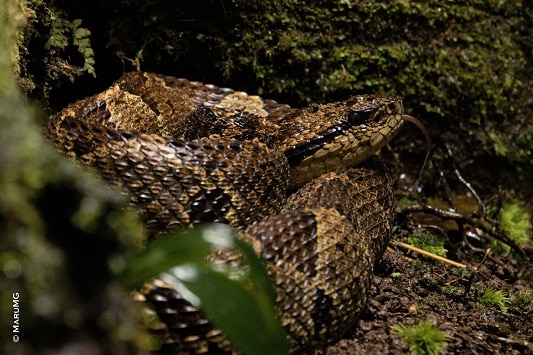
From a distance, the Mexican jumping viper (Metlapilcoatlus nummifer) looks like a statue. It looks like an ancient sculpture left in the wilderness for thousands of years which is magically immune to weathering. Mexican jumping vipers are immobile for much of the day, since they’re mainly ambush predators. They must stay exceedingly still, as anything else would alert prey to their presence.
Similarly, it’s wiser not to strike every single human walking past. But if touched, they have no choice but to respond, and the change can be shockingly quick. Dozens of steely scales suddenly shift at once, and a head on, horribly detailed serpent face might be the last thing you see before waking up in hospital the next day. Fortunately, while they’re great at terrifying, Metlapilcoatlus nummifer bites rarely kill.
This is a species of southern Mexican forests, which has a more moderate venom, mainly causing swelling and some haemorrhaging. This species has a relatively weak venom, and mainly sticks to the floors of forests rather than climbing trees. They measure 50cm on average, and further south, you can find their close relative the Central American jumping viper (Metlapilcoatlus mexicanus).
| 2 | Toad-headed pitviper |
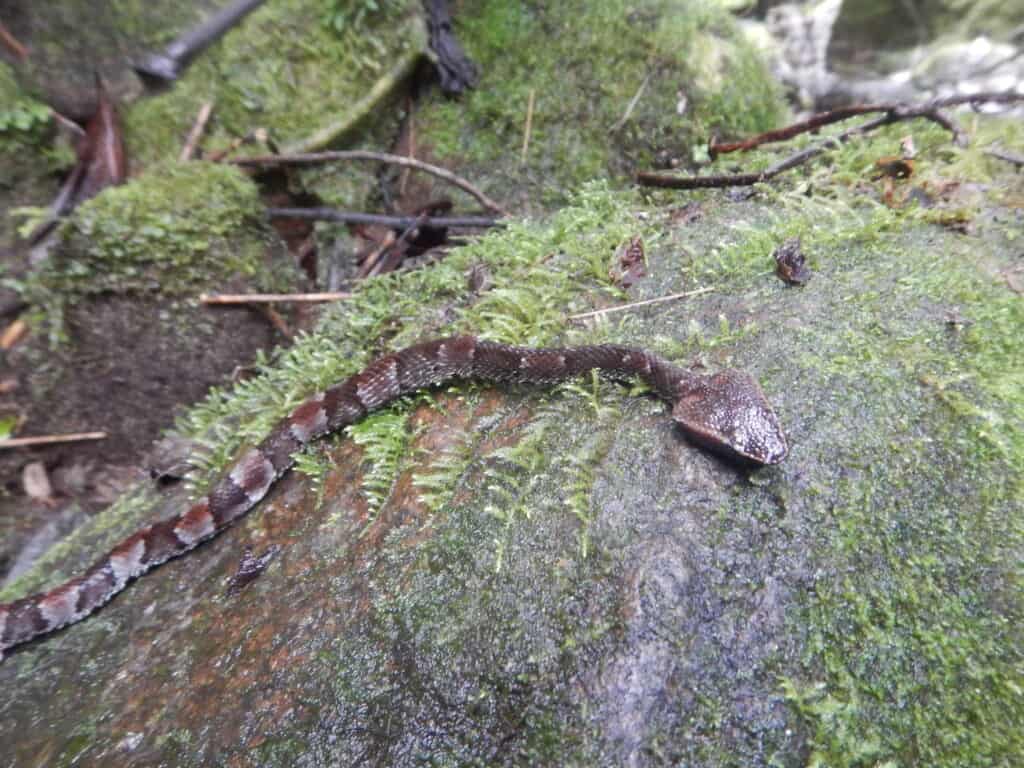
This venomous snake can cause rotting, necrotic lesions and even amputation if victims are bitten on the finger. However, they’re tactical in that they only use their venom rarely. Bothrocophias microphthalmus is smart enough to know that a human walking right past isn’t a threat, and won’t move much more than their head to gain a superior line of sight.
This species guards the humid slopes of the Andes, and loves to sit on rock slabs in forests to gain a superior view. Their venom contains a dose of cytotoxins and hemotoxins, which can cause spontaneous haemorrhaging from the bite wound and minor cuts. Toad-headed pitvipers are a small presence in the snakebite statistics of Brazil, making up 1.5% in a couple of small regions, with common lanceheads ruling the roost. But bites are a possibility in jungled forest trails, particularly if you stride up to their rock and start provoking them.
Touching a toad-headed pitviper is most unwise. At 11 metres, you’ll probably be fine. At 100cm away, you still have a chance to reconsider your decision. But the second your fingers touch their steely scales, there’s no going back. The snake’s vertical pupils will flash up and all its savage powers will be unleashed. You can find this snake (if you really must) in western Brazil, Peru, Ecuador, Colombia and Bolivia.
| 3 | Red-headed krait |
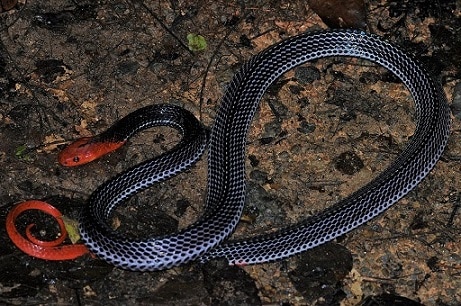
This 1.2-1.5 metre snake bites virtually without fail if touched. Red-headed kraits are part of southern Thailand’s snake fauna, and usually cause no more trouble than a sloth. They hang out in warm rainforests, usually withn the shelter of a dark burrow, and almost never appear near human settlements.
Red-headed kraits have one of the snake kingdom’s most potent venoms, scoring LD50 0.32mg, yet bites are very rare in humans. This is a pretty relaxed snake, not mean-spirited and with an inferiority complex like the mulga. Not unreasonably, the one thing that makes them angry is being touched by predators, particularly when they’re 30 times larger than they are. A stroke, a prod or a flick will send a red-headed krait flying into a rage all the same. The consequences of this could be neurotoxins flowing through your bloodstream, slurred speech and even lung failure.
With red-headed kraits, there’s a big difference between and night. During darkness, they’re highly alert and therefore dangerous, while in the day, they’re extremely sluggish and lethargic (except if touched).
| 4 | Beautiful pitviper |
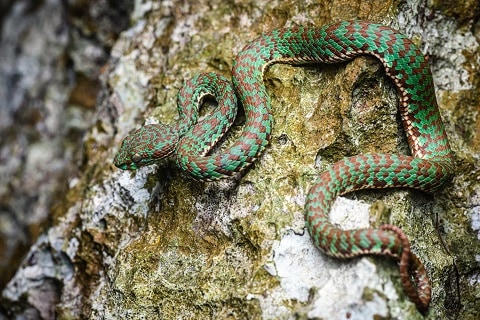
The beautiful pitviper (Trimeresurus venustus) has a pretty cool life, sitting in bushes on the edge of Thai forest trails. Sitting calmly for hours, it sees far more than human beings ever could, watching the world unfold, seeing constant tales of birds and lizards unfold. It’s fairly tolerant of humans walking past, chatting inanely and even flashing a camera in their face from a safe distance. The beautiful pitviper usually stays calm and stares ahead patiently. but one thing it cannot tolerate, which causes its patience to finally snap, is being touched.
Trimeresurus venustus delivers a rapid snap of a bite which can strike a finger, a hand, or more important places beyond like the chest. Gloves or a jacket are decent protection, but beautiful pitvipers are unpredictable in where they bite. The one thing that is predictable is that human touch makes them snappy.
It’s one of nature’s equations: a calm beautiful pitviper + plus human touch = an angry beautiful pitviper. This is a southern Thai species which is neither too common nor rare. They prefer low lying bushes, whether near villages or remote forests further afield. Beautiful pitvipers have a milder venom than other Trimeresurus members, which lucky victims can survive with just pain and swelling.
| 5 | Clark’s coral snake |
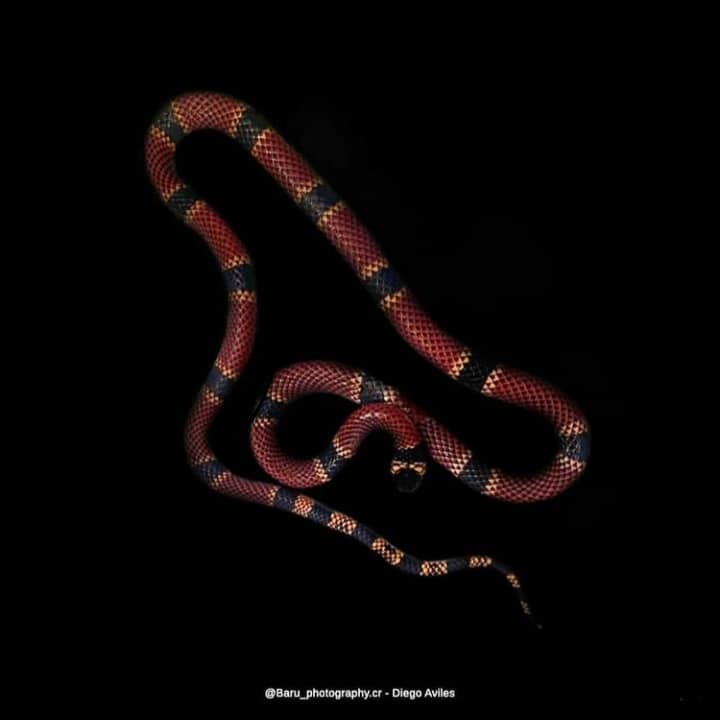
Many snakes are twitchy and barely allow humans to come within any distance at all. The black mamba has superb eyesight, and sometimes flees when people are still 10 metres away. Then you have the opposite, such as Micrurus clarki.
Clark’s coral snake is tolerant of humans coming to within 1 metre. They might keep their eyes fixed on you menacingly, but they’ll rarely attack. When touched, they switch instantly to aggressive mode and deliver a fast and efficient bite to your hand.
This species lives in moist forests of Costa Rica and Panama, particularly in the deep wilderness. They dislike open spaces, preferring to lurk in cluttered vegetation. They mostly eat fellow snakes and swamp eels, which they disable with a neurotoxic venom. Clark’s coral snakes cause very few bites in humans per year. They stick to the outdoors, and don’t have a tendency to appear in people’s toilets. The majority of incidents happen from people deliberately provoking them, touching being chief among this. Clark’s coral snake is a species to look at and not interact with.
| 6 | Side-striped palm pitviper |
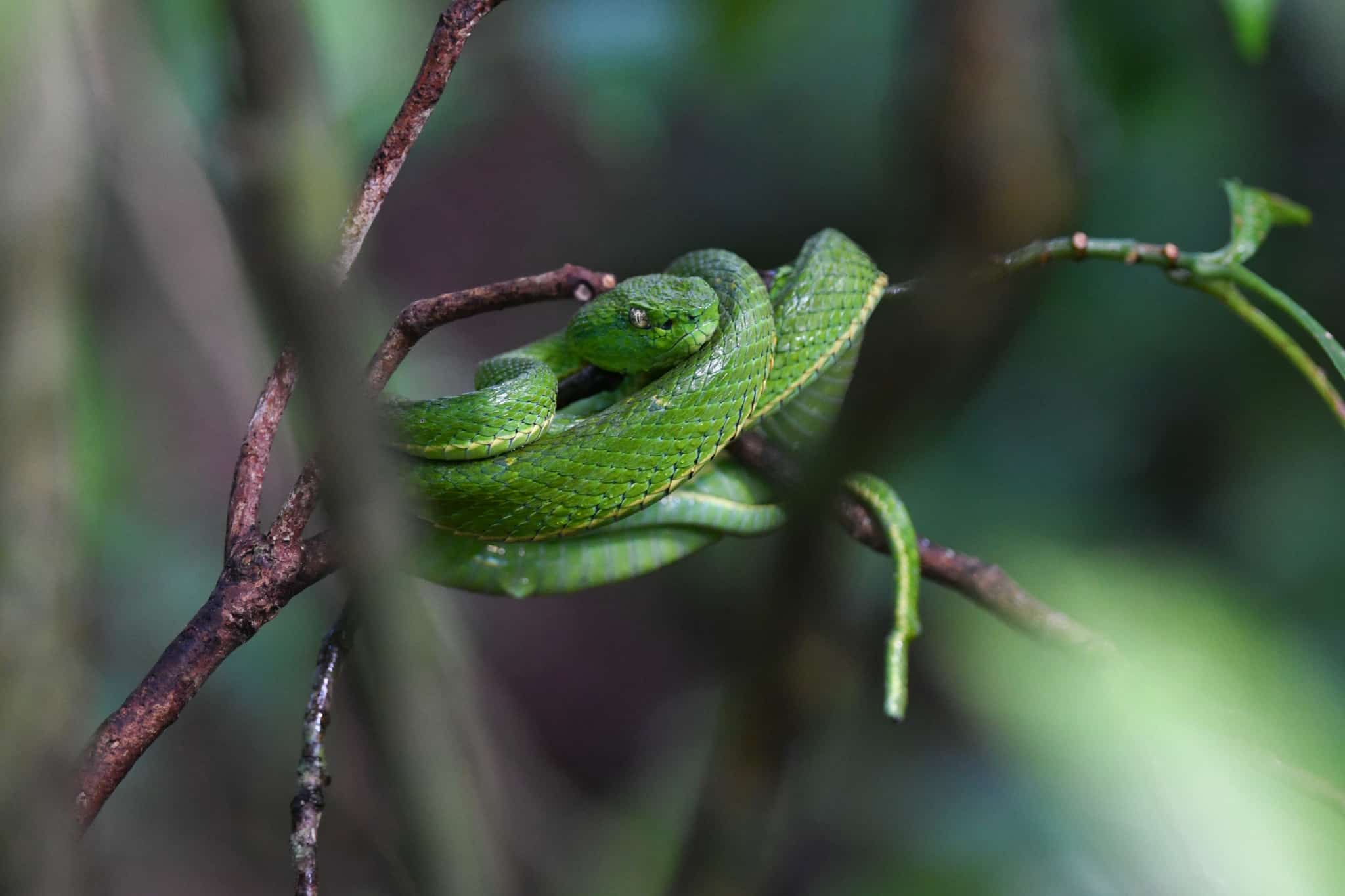
This Central American snake doesn’t mind people walking past its tree, but any touch sends them flying into a rage which could leave you in hospital. Bothrops lateralis’ venom is a wicked concoction of haemorrhagins and cytotoxins, and their strike is rapid. The initial symptoms are intense pain and swelling, possibly followed by spontaneous bleeding. Victims usually survive, but some can spend several dull days in hospital, watching sitcoms in a foreign language they can’t understand.
The best way to avoid this miserable fate is to walk right past a side-striped palm pitviper, maybe flashing a camera, but never touching them. Bothrops lateralis are very vigilant when it comes to predators (which it files humans under), and its default position is bite, bite, bite. Until actually touched, they remain calm, but they then flip a switch.
One snake which is the opposite is the ball python, a popular pet which prefers to curl up tightly in its coils, protecting its brain. Bothrops lateralis is the cousin of the eyelash viper, and their confirmed prey include brittle belly frogs and turnip tailed geckos.
| 7 | Banded water snake |
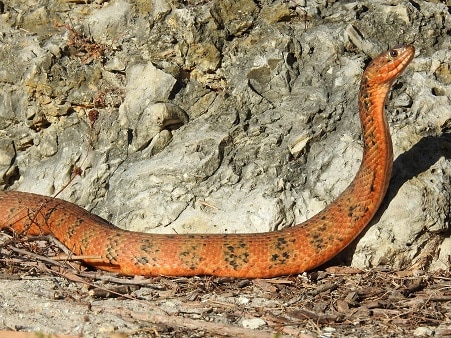
Stroking this snake is the worst thing you could possibly do. The banded water snake (Nerodia fasciata) is a 60-105cm species of small streams and rivers, which they’re perfectly adapted to. Their life involves swimming, lurking under water surfaces, and investigating strange scents on the muddy shore. Their diet contains frogs and amphibians, with an occasional helping of earthworms and small turtles. Humans can watch these splendid scenes unfold in peace, unless they touch, in which case the idyllic scene will flip into a nightmare.
The banded water snake hates being touched. They just can’t stand it, and it sends every danger sensor they have through the roof at once. A touched banded water snake will lunge at the interloper’s hand in seconds, possibly biting more than once. They’ll hiss loudly and keep attacking until the interloper leaves.
If not touched, then the banded water snake will swim on by, barely adjusting its speed. This is a species of the southeastern US, with smaller Caribbean colonies. Not touching them is a morsel of knowledge which local people likely learned the hard way.
| 8 | Sumatran short-tailed python |
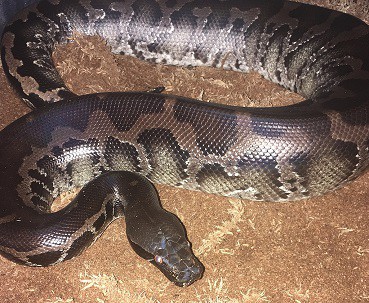
Python curtus lives in swampy forests of Indonesia, and mostly lives a peaceful life among humanity. It never charges across fields and it never invades innocent people’s bedrooms like a Mozambique spitting cobra. But this tenuous truce comes with an agreement: that you must never, ever touch them. Some people foolishly breach this agreement, and soon find a snake latched firmly onto their arm.
Sumatran short-tailed snakes lack venom, but have an extremely sharp pair of teeth. Their diet is mainly mammals, including legions of black rats which infest palm oil plantations. They also have a tendency to hide in termite mounds. Their sudden snapping style isn’t that surprising, as most snakes face threats from birds descending from overhead with their talons outstretched. Most snakes can fight back, but some have doubtlessly gone further and evolved hyperviligant responses.
It makes sense for the Sumatran short-tailed python to be immobile to the last minute, keeping its camouflage operational, and switching to attack only when touched. This could all be part of the plan rather than a weird quirk. Other snakes are different; they’re wild and vicious from the getgo, attempting to scare predators into fleeing.
| 9 | Taiwan kukri snake |
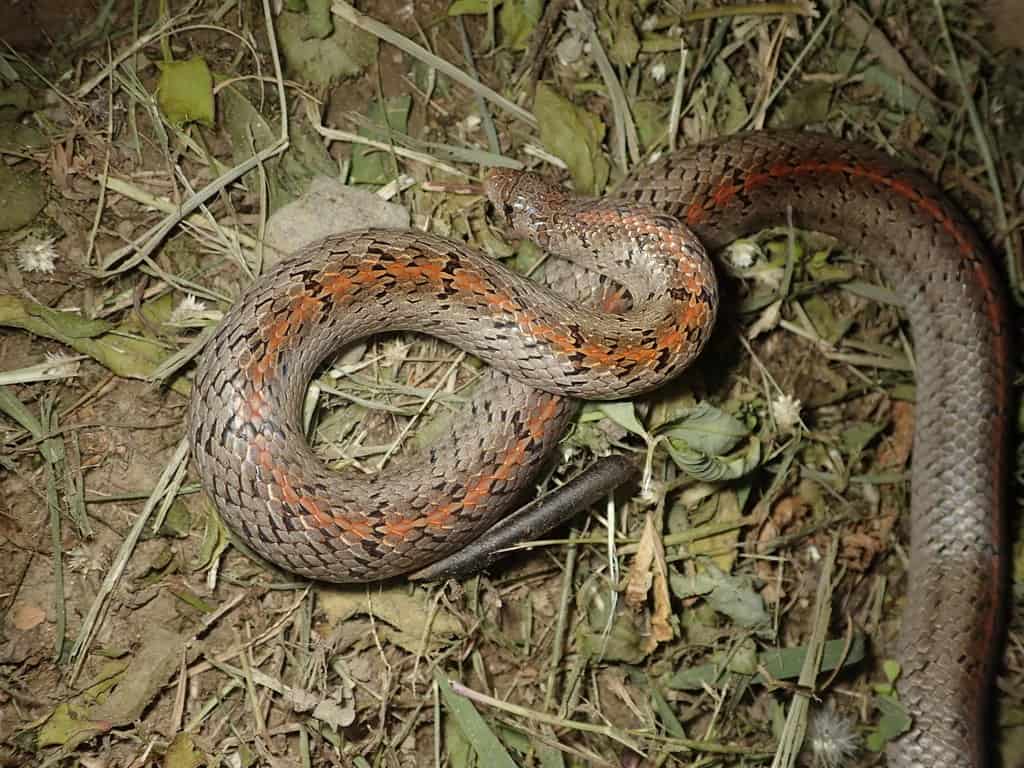
The Taiwan kukri snake causes very few bites, mainly because most people aren’t stupid enough to touch them. Make contact, however, and Oligodon formosanus will swing its head down and commence tearing your skin with its dagger-like teeth. This species lives in southeast Asia, and is most commonly encountered along tourist trails in Vietnam. Their most common activities are basking on rocks or slithering away slowly.
Taiwan kukri snakes have no venom and rely on loose constriction for hunting, applying two vague coils to give them time to angle their mouth correctly. Incidents with humans are low, except scaring people. However, researchers and scientists have all commented on how Taiwan kukri snakes dislike being touched. Picking one up for a photo is virtually impossible without preparing yourself for serious pain.
The sunbeam snake is the opposite, refusing to bite even if picked up and poked. Likewise, for the grass snake of western Europe, where biting is virtually a moon landing level event. Taiwan kukri snakes average at 50cm, and are particularly common in the civilised forest trails of Hong Kong.
| 10 | Striped whipsnake |
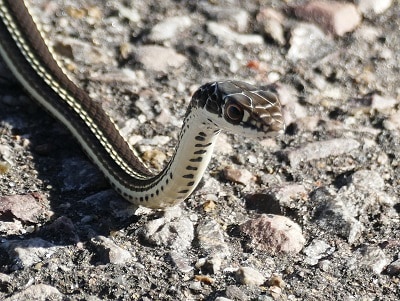
The striped whipsnake is non-venomous, and moves around much more aggressively than the banded water snake. They don’t take much notice of humans, considering them to be irrelevant, but touch them and they’ll instantly rear forward with a fierce hiss. This species measures 80-180cm, and favours fields and grassy clearings. They move quickly virtually all the time, swallowing up fellow snakes (such as gopher snakes) and slithering past the feet of old couples sitting on benches. Touch them, and all their speed and determination will be directed at you.
This species is related to the coachwhip, and stretches from the western US to northern Mexico. Striped whipsnakes lack the power to kill, but it’s intimidating to see one flying towards you, and there’s a chance that they’ll get lodged in your nightmares forever. They have sharp teeth which can rip human skin, and some believe that they whip people with their tails.
Though non-venomous, there’s a risk that bacteria will leach into a bite wound and multiply past the infection threshold. To avoid all this, you should look but never touch, and the striped whipsnake won’t realise that you exist.
